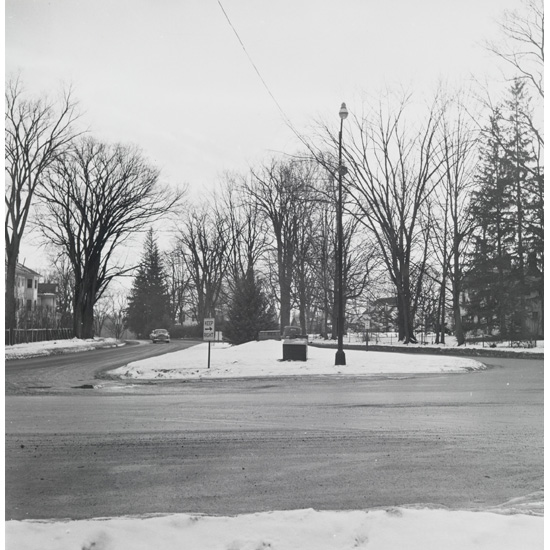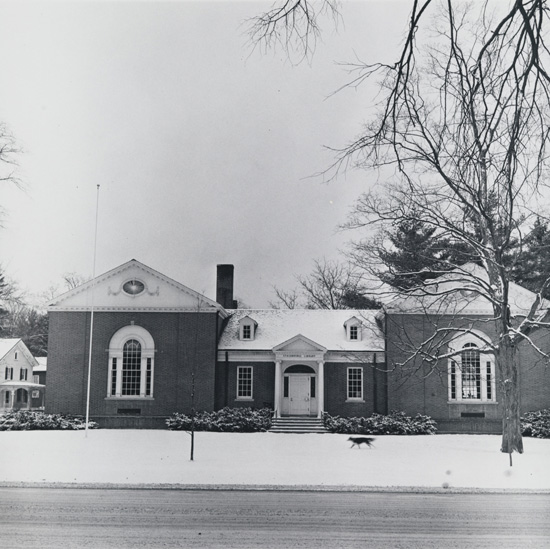Home for Christmas (Stockbridge Main Street at Christmas) – 1967
When Norman Rockwell moved to Stockbridge in 1953, he worked in a studio located over the town market that is centrally located in this painting . Step back in time as you watch this video of Rockwell at work, and see how Stockbridge’s Main Street remains virtually unchanged.
REFERENCE PHOTOS
View the photo gallery of Louis Lamone’s reference photos of the Main Street in Stockbridge.
AUDIO
Listen to the adult and family audio segments from the Museum’s digital gallery tour for Home for Christmas.
Learn more about the Museum’s Digital Gallery Tour.
Adult Audio
Family Audio
ABOUT – Home for Christmas
Norman Rockwell’s painting Home for Christmas has come to symbolize Christmas in New England, just as Rockwell intended in 1967. Rockwell wanted the editors at McCall’s to identify the scene as Stockbridge in the text — and they did.
Norman Rockwell takes you on a Christmas Eve walk along Stockbridge’s main street — past the public library, the antiques and gift shops, the insurance office, the supermarket behind its Greek-revival facade: past the barbershop, the old town office, the new town bank and down the rambling Victorian hotel, beyond which is Rockwell’s own studio.
McCall’s reached out to its national audience by adding, “Wherever you happen to hail from — city, suburb, farm or ranch — we hope you will have, for a moment, the feeling of coming home for Christmas.”
In addition to photographs taken of the buildings on Main Street, Rockwell drew on a variety of references to create his snowy winter scene. For sky and mountains, he used photos of snow-draped mountains in the Berkshire Hills, Vermont, and Switzerland. Prints of Siberian winter scenes provided examples of snow-covered streets. For the warm interior glows, he studied magazine images of candlelit country homes. For clothing styles, especially women’s coats, he relied on illustrations in a Sears & Roebuck catalogue. Rockwell’s assistant Louie Lamone photographed each building from a frontal point of view in support of Rockwell’s concept to create an artwork in the style of a 19th century limner documenting the important aspects of the town.
Established in 1773 as a stagecoach stop, The Red Lion Inn has always been the social hub of town. Its windows are darkened in Rockwell’s work because the Inn closed down in the winter until 1969, two years after this painting was published. Rockwell’s South Street home and studio appear at the far right border. In a window above the market, a Christmas tree glows in a room that was Rockwell’s studio from 1953 to 1957. The Old Corner House, which became the home of the first Norman Rockwell Museum two years after the painting was completed, stands at the left border of the painting.










